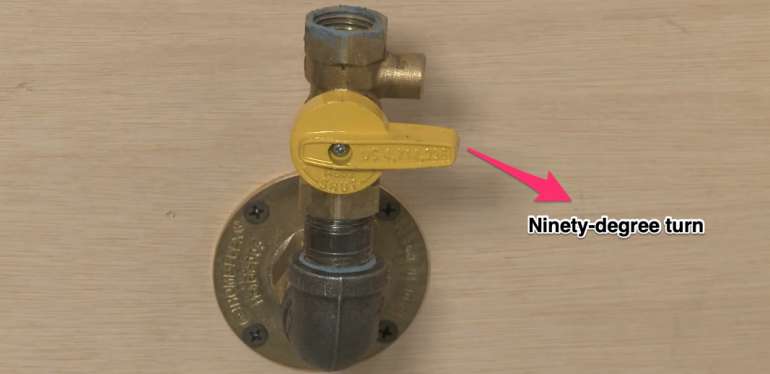Maybe you’re installing a brand-new floor in your kitchen. Perhaps it is time to replace your old clunky stove with a sleek new model. No matter what your reason may be, everyone eventually comes to a point where they must learn how to disconnect a gas stove.
You might be extremely hesitant to tackle this do-it-yourself project for fear of catastrophe, but there is really nothing to be afraid of. If you are paying attention to the details and follow the instructions carefully, you run very little risk of causing damage to your home.
Ready to learn more about unhooking a gas stove? Here are the facts that you need to know before you move forward.
Is It Safe to Disconnect a Gas Stove?
Many homeowners mistakenly believe that it is unsafe for them to disconnect their own gas stoves. They would rather pay a professional to make sure that everything is done safely and in the proper order. Unfortunately, you may be throwing money out the window because it is so simple to do yourself.
The most important thing you must understand is how to check for leaks. Once you turn the gas off and have disconnected the stove, you need to make sure that there is no gas slowly leaking into the kitchen air.
This can be difficult to determine because you will definitely smell the lingering gas from the connection hose. Open the window to get rid of this odor and introduce fresh air into space. However, you will still need to determine whether there is a slow and steady leak of gas into the air. Instead of relying on your sense of smell, you need a foolproof method that you can see.
Experts recommend mixing up a bottle of soapy water. Apply that solution to your gas line and let it soak for a few minutes. If you notice any bubbles forming, then you need to tighten the valve to turn it off further. You may need to use a pipe wrench in order to twist the valve as far as it needs to go.
How to Disconnect a Gas Stove
With the safety precautions in place, it is time to disconnect your gas stove from the wall finally. Many people want to make this into something more complicated than it actually is. It is actually extremely easy to learn how to disconnect a gas stove from a gas line.

All you have to do is reach behind the stove and turn off the gas. It should be approximately a ninety-degree turn.
From here, you disconnect the hose and move the stove to wherever it needs to go.
As soon as you disconnect the hose and move the stove slightly out of the way, be sure to spray your soapy water on the connection. This is the ideal time to test for a potential leak. If you don’t spot any signs of a potential gas leak, then you can move forward with the rest of your flooring installation or installing your new stove.
Another professional tip is to cap the pipe while you are working until you are ready to reinstall the stove. You should be able to purchase a threaded cap and sealer in the hardware section of your local home improvement store for just a few dollars. This protects you in case someone accidentally hits the valve while working and jostles it loose. It saves you from having a major gas leak in your home.
Be careful that you do not overtighten the valve in your attempts to close it completely.
If you are still concerned about a potential gas leak in your home, you could turn off the gas main to your home while you work. This offers you double protection with both the main and the stove valve completely turned off. While it is still advised to test for leaks with soapy water, it can definitely put your mind at ease.
Reconnecting the Gas Stove
When you finish your project or are simply ready to install your new stove, consider taking some additional precautions. Experts recommend using pipe dope that has been approved for use with natural gas lines. This “pipe dope” is a common phrase used to describe a pipe thread sealant that creates an excellent seal between the valve and the new pipe.
Once you reinstall the stove and connect the hose, make sure to test again for leaks. Spray your soapy water and make sure that no bubbles form. If they do, you should immediately turn the gas back off until you can pinpoint the source of the leak and correct it.
Disconnecting a Gas Stove
While you may have originally had some trepidation about disconnecting your own gas stove, maybe you can rest easy knowing how simple it really is. Save your hard-earned dollars by opting do this repair on your own instead of hiring a professional. With the right tools and very little skill, anyone can disconnect and reconnect a gas stove in just minutes. You probably already have all the tools you need on hand!
- Is a Hot Water Heater In the Attic a Good or Bad Idea? - July 18, 2021
- Lawn Mower Starts Then Dies – Here’s the Fix! - June 21, 2021
- Can You Mix Pine-Sol and Bleach? - September 9, 2020
